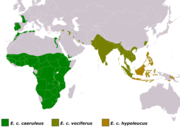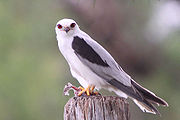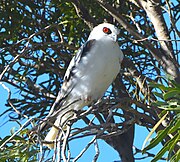Superregnum: Eukaryota
Cladus: Unikonta
Cladus: Opisthokonta
Cladus: Holozoa
Regnum: Animalia
Subregnum: Eumetazoa
Cladus: Bilateria
Cladus: Nephrozoa
Superphylum: Deuterostomia
Phylum: Chordata
Subphylum: Vertebrata
Infraphylum: Gnathostomata
Megaclassis: Osteichthyes
Cladus: Sarcopterygii
Cladus: Rhipidistia
Cladus: Tetrapodomorpha
Cladus: Eotetrapodiformes
Cladus: Elpistostegalia
Superclassis: Tetrapoda
Cladus: Reptiliomorpha
Cladus: Amniota
Classis: Reptilia
Cladus: Eureptilia
Cladus: Romeriida
Subclassis: Diapsida
Cladus: Sauria
Infraclassis: Archosauromorpha
Cladus: Crurotarsi
Divisio: Archosauria
Cladus: Avemetatarsalia
Cladus: Ornithodira
Subtaxon: Dinosauromorpha
Cladus: Dinosauriformes
Cladus: Dracohors
Cladus: Dinosauria
Ordo: Saurischia
Cladus: Eusaurischia
Subordo: Theropoda
Cladus: Neotheropoda
Cladus: Averostra
Cladus: Tetanurae
Cladus: Avetheropoda
Cladus: Coelurosauria
Cladus: Tyrannoraptora
Cladus: Maniraptoromorpha
Cladus: Maniraptoriformes
Cladus: Maniraptora
Cladus: Pennaraptora
Cladus: Paraves
Cladus: Eumaniraptora
Cladus: Avialae
Infraclassis: Aves
Cladus: Avebrevicauda
Cladus: Pygostylia
Cladus: Ornithothoraces
Cladus: Ornithuromorpha
Cladus: Carinatae
Parvclassis: Neornithes
Cohors: Neognathae
Cladus: Neoaves
Ordo: Accipitriformes
Familia: Accipitridae
Subfamilia: Elaninae
Genus: Elanus
Species: E. axillaris - E. caeruleus - E. leucurus - E. scriptus
Name
Elanus Savigny, 1809
References
Description de l'Egypte 1 p.69,97
Elanus is a genus of bird of prey in the elanine kite subfamily. It was introduced by the French zoologist Jules-César Savigny in 1809 with the black-winged kite (Elanus caeruleus) as the type species.[2][3] The name is from the Ancient Greek elanos for a "kite".[4]
These are white and grey raptors of open country, with black wing markings and a short square tail. They hunt by slowly quartering over mainly savanna habitat for rodents and other small mammals, birds and insects, sometimes hovering like a kestrel. The primaries and secondaries have soft barbules from the upper surface that help in owl-like silent flight. The genus Elanus is distinctive in having very small scales covering the foot and on the underside, scutellate scales are found only under the terminal phalanges. The claw lacks a groove on the underside. They also have eyesight suited for crepuscular rodent hunting.[5][6] The genus contains four species, all of which hunt small mammals, especially rodents, by hovering in the air while looking for them in over open savanna habitats.[7] For some time, these species were all included as subspecies of Elanus caeruleus, which has been known as the black-shouldered kite.[8][9][10]
The letter-winged kite breeds colonially and is nocturnal. The other species are both diurnal and crepuscular.[6][11]
| Common name | Scientific name and subspecies | Range | Size and ecology | IUCN status and estimated population |
|---|---|---|---|---|
| Black-winged kite
|
Elanus caeruleus (Desfontaines, 1789)
Three subspecies
|
sub-Saharan Africa and tropical Asia |
Size: Habitat: Diet: |
LC |
| Black-shouldered kite
|
Elanus axillaris (Latham, 1801) |
Australia |
Size: Habitat: Diet: |
LC
|
|---|---|---|---|---|
| White-tailed kite
|
Elanus leucurus (Vieillot, 1818)
Two subspecies
|
southern Texas and eastern Mexico to the Baja California Peninsula and through Central and South America to central Argentina and Chile. |
Size: Habitat: Diet: |
LC |
| Letter-winged kite
|
Elanus scriptus (Gould, 1842)
Two subspecies
|
northeastern South Australia |
Size: Habitat: Diet: |
NT |
|---|
Notes
References
"Accipitridae". aviansystematics.org. The Trust for Avian Systematics. Retrieved 2023-07-26.
Savigny, Jules-César (1809). Jomard, Edme-François (ed.). Description de l'Égypte, ou recueil des observations et des recherches qui ont été faites en Égypte pendant l'expédition de l'armée française, publié par les ordres de sa Majesté l'Empereur Napoléon le Grand (in French). Vol. 1. Paris: L'Imprimerie Impériale. pp. 69, 97–98.
Mayr, Ernst; Cottrell, G. William, eds. (1979). Check-list of Birds of the World. Vol. 1 (2nd ed.). Cambridge, Massachusetts: Museum of Comparative Zoology. p. 290.
Jobling, James A. (2010). The Helm Dictionary of Scientific Bird Names. London: Christopher Helm. p. 144. ISBN 978-1-4081-2501-4.
Keirnan, Aubrey; Worthy, Trevor H.; Smaers, Jeroen B.; Mardon, Karine; Iwaniuk, Andrew N.; Weisbecker, Vera (2022). "Not like night and day: the nocturnal letter-winged kite does not differ from diurnal congeners in orbit or endocast morphology". Royal Society Open Science. 9 (5). Bibcode:2022RSOS....920135K. doi:10.1098/rsos.220135. ISSN 2054-5703. PMC 9128852. PMID 35620001.
Negro, Juan J.; Pertoldi, Cino; Randi, Ettore; Ferrero, Juan J.; López-Caballero, José M.; Rivera, Domingo; Korpimäki, Erkki (2006). Boal, Clint (ed.). "Convergent evolution of Elanus kites and the owls". Journal of Raptor Research. 40 (3): 222–225. doi:10.3356/0892-1016(2006)40[222:CEOEKA]2.0.CO;2. hdl:10261/33813. ISSN 0892-1016. S2CID 85004744.
Gill, Frank; Donsker, David, eds. (2017). "New World vultures, Secretarybird, kites, hawks & eagles". World Bird List Version 7.3. International Ornithologists' Union. Retrieved 31 December 2017.
Parkes, Kenneth C. (1958). "Specific relationships in the genus Elanus" (PDF). Condor. 60 (2): 139–40. doi:10.2307/1365270. JSTOR 1365270.
Clark, William S.; Banks, Richard C. (1992). "The taxonomic status of the White-tailed Kite" (PDF). The Wilson Journal of Ornithology. 104 (4): 571–79.
Check-list of North American Birds (6th ed.). Lawrence, Kansas: American Ornithologists' Union. 1983. p. 103. ISBN 0-943610-32-X.
Ridgway, Robert (1900). A manual of North American Birds. Philadelphia: J.B. Lippincott Co. p. 222.
Other sources
Ferguson-Lees, Christie, Franklin, Mead and Burton Raptors of the World ISBN 0-7136-8026-1
Retrieved from "http://en.wikipedia.org/"
All text is available under the terms of the GNU Free Documentation License





